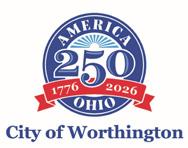




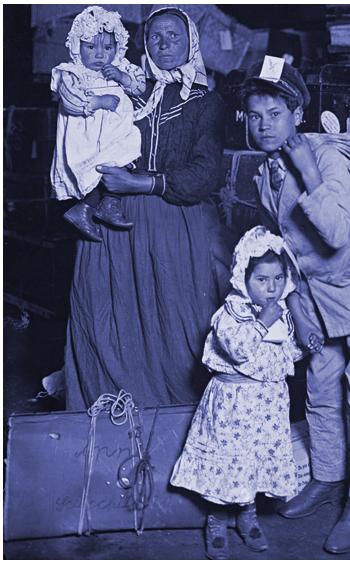
2025 - 2026 SEASON | FALL
WHERE MUSIC AND COMMUNITY MEET








2025 - 2026 SEASON | FALL
WHERE MUSIC AND COMMUNITY MEET

Dear Friends,
Welcome to the Worthington Chamber Orchestra’s 2025–2026 season, American Crossroads! As I reflect on our 13th year together, I am filled with gratitude for this community and the role the WCO plays in connecting people through music.
This season is especially meaningful as we join in celebrating the 250th anniversary of the United States. American Crossroads explores the intersection of identity, heritage, and creativity, highlighting the many voices that make up the American story. Through symphonic works, new commissions, and multidisciplinary collaborations, we aim to honor the past, reflect on the present, and inspire the future.
Our Masterworks concerts bring these themes to life in partnership with the Worthington Historical Society, the King Arts Complex, the Worthington Resource Pantry, poet Jennifer Hambrick, sculptor Omar Shaheed, and visual ethnographer Tariq Tarey. These collaborations enrich the music experience by drawing on history, literature, and visual art, creating programs that celebrate both artistry and community.
As Executive, Artistic and Music Director, I am committed not only to shaping meaningful artistic experiences but also to ensuring the long-term vitality of this organization. The WCO is proud to offer a range of programming, from our Education and Family Series to our Community Connect events, which spark dialogue, inspire young people, and ensure that classical music remains accessible to all.
None of this would be possible without the dedication of our Board, staff, musicians, and you—our loyal patrons and supporters. Your enthusiasm and generosity make it possible for the WCO to continue growing while remaining deeply rooted in the Worthington community.
It is a privilege to serve in this role and to share the stage, the music, and the mission with you. Together, we will continue to make the Worthington Chamber Orchestra a place where music and community meet.
With gratitude,

Antoine T. Clark
Executive, Artistic and Music Director Worthington Chamber Orchestra
Chamber Music Series
American Inspiration
Thursday, September 25, 2025, 7 PM
McConnell Arts Center
Education and Family Series
Young People’s Concerts: Danse Macabre
Wednesday, October 29, 2025, 10 AM & 12 PM
McConnell Arts Center
Community Connect Series Frontiers of Sound
Saturday, November 1, 2025, 1 PM
St. John’s Episcopal Church
Masterworks Series: American Crossroads Frontiers of Sound
Sunday, November 9, 2025 3 PM
Worthington United Methodist Church

Michael Ball, President
Frank Shepherd, Treasurer
Lorraine Robinson, Secretary
Ben Cooper
Benedicta Enrile
Jennifer Hambrick
Bronwynn Hopton
Lori Overmyer
Ellen Stukenberg
Charlie Warner Staff
Antoine T. Clark, Executive, Artistic and Music Director
Anne Zavaglia, Orchestra Manager
Daniel Hange, Production Manager
Tyler Norin, Conducting Apprentice / Production Assistant
Justin Johnston, Grant Proposal Specialist
Bronwynn Hopton, Graphic Designer
Heike Hoffer, Program Note Writer
The mission of the Worthington Chamber Orchestra (WCO) is to support local artists while providing diverse and dynamic programming that entertains, inspires, and fosters music education. WCO cultivates relationships between artists and the Worthington community.
The Worthington Chamber Orchestra proudly presents its 13th season, American Crossroads, commemorating the nation’s 250th anniversary with a rich tapestry of music and collaboration. We join the City of Worthington and the State of Ohio in honoring this milestone. This year’s programs bring together composers, poets, visual artists, and community partners to showcase the diverse voices and stories that shape the American experience.
Benedicta Enrile Masterworks Series Frontiers of Sound ventures into the adventurous and experimental spirit of America. It begins with fresh offerings—Jerod Impichchaachaaha’ Tate’s Chokfi’ (Sarcasm) and a new work for violin and orchestra by Aaron Quinn featuring WCO Concertmaster Devin Copfer. The charm of small-town life, Worthington’s history, the pioneer spirit, and the wide horizons of the American West come into focus in Charles Ives’ “Country Band” March, Marshall H. Barnes’ Old Worthington Suite (in a new orchestration by Jacob Reed), and Aaron Copland’s Billy the Kid Suite. The program also features poetry and narration by Jennifer Hambrick, with the Worthington Historical Society as a community partner.
Forever Dreaming reflects on the American Dream and personal aspirations, featuring Jeffrey Scott’s Sinfonietta of Dreams, a work influenced by Dr. Martin Luther King Jr.’s “I Have a Dream” speech; Alyssa Morris’s imaginative Dreamscape for oboe and orchestra with Dwight Parry, Principal Oboist of the Cincinnati Symphony Orchestra, as soloist; and Florence Price’s Symphony No. 1 in E minor. This barrier-breaking work was the first symphony by a Black woman to be performed by a major American orchestra, marking a historic moment in American music. Sculptural art by Omar Shaheed complements this program. We are thrilled to welcome the King Arts Complex as a community partner.
Upon These Shores explores resilience and cultural convergence through Jessie Montgomery’s Banner. Composer-in-Residence Ben Shirley is featured in a new work for string quartet and orchestra with Columbus’s own Carpe Diem String Quartet. The program also includes Franz Waxman’s Sinfonietta, Derek Bermel’s A Shout, a Whisper, and a Trace, and selections from Leonard Bernstein’s iconic West Side Story. Visual ethnographer Tariq Tarey brings immigrant stories into dialogue through compelling photography. We are honored to partner with the Worthington Resource Pantry for this concert.
Chamber Music Series
American Inspiration highlights America’s varied cultural roots and their impact on Dvořák, captured in his “American” Quartet, written during his stay in Spillville, Iowa. The program also includes Ben Shirley’s playful Whistle Pig! and Dvořák’s Serenade in D minor for Winds, Cello, and Double Bass, Op. 44, a work steeped in his Bohemian heritage that evokes the charm of village bands and the vitality of folk tradition.
American Portraits highlights notable American figures with Morton Gould’s Benny’s Gig, Valerie Coleman’s Portraits of Langston narrated by Marcus Jackson, Associate Professor and Director of Creative Writing at The Ohio State University, Ben Shirley’s Big Pine Key (world premiere), and Michael Daugherty’s Dead Elvis
Danse Macabre introduces Saint-Saëns’ spooky classic in a festive program designed to spark curiosity in young audiences.
Paddington Bear’s First Concert by Herbert Chappell whimsically tells the story of Paddington’s first experience at a concert. The performance takes place at the Old Worthington Library, which partners with WCO to invite families into the joy of live music.
In collaboration with local partners, WCO hosts public conversations at St. John’s Episcopal Church, St. John AME Church, and the Worthington Resource Pantry. These events give audiences deeper insight into each Masterworks program—its themes, music, and artists—while fostering dialogue and engagement that extend beyond the concert hall.
Through its blend of landmark works, world premieres, and community partnerships, the Worthington Chamber Orchestra’s American Crossroads season honors the nation’s heritage while embracing its future. We are thrilled that you are sharing in the celebration with us!

“Clark, who led from the podium with balletic poise.”
Compelling interpretations, inventive performances, and an energetic stage presence are the hallmarks of American conductor Antoine T. Clark.
He is the founding Artistic and Music Director of the Worthington Chamber Orchestra in Ohio and a passionate advocate for expanding access to classical music and fostering community engagement.
In the 2025–2026 season, Mr. Clark enters his thirteenth year leading the Worthington Chamber Orchestra with a Masterworks series titled American Crossroads. In celebration of the 250th anniversary of the United States, the series explores the intersection of American identity, heritage, and creativity through powerful symphonic works and multidisciplinary collaborations. This season features partnerships with the Worthington Historical Society, the King Arts Complex, the Worthington Resource Pantry, poet Jennifer Hambrick, sculptor Omar Shaheed, and visual ethnographer Tariq Tarey—highlighting Clark’s commitment to inclusive programming and interdisciplinary collaboration that reflects the cultural richness of the communities he serves.
Mr. Clark most recently served as Associate Conductor of the Wheeling Symphony Orchestra (2023–2024), following two seasons as Assistant Conductor. His upcoming and recent guest conducting engagements include the Long Bay Symphony (2026), Toledo Symphony Orchestra (2025), Juneteenth Festival Orchestra at UCLA (2024), Gateways Music Festival on a two-city New York tour, Walla Walla Symphony, South Carolina Philharmonic, Lima Symphony Orchestra, New Jersey Symphony, Symphony Tacoma, Spartanburg Philharmonic, Cincinnati Symphony Orchestra, Elgin Symphony Orchestra, Dayton Philharmonic, Opera Columbus, and the Vermont Symphony Orchestra. In addition to his guest appearances, he has served as a cover conductor for the Lancaster Festival Orchestra, Dayton Philharmonic, and New Jersey Symphony Orchestra under the direction of Xian Zhang. His work
- Chicago Tribune has garnered critical acclaim, including recognition from the Chicago Tribune for his “balletic poise” during the premiere of Joel Thompson’s breathe/burn: an elegy with the Chicago Sinfonietta. His previous positions include Assistant Conductor of the Chicago Sinfonietta and the Gateways Music Festival Orchestra, Music Director of the Ohio Wesleyan University Chamber Orchestra and Ohio Northern University Symphony, and Assistant Conductor of The Ohio State University Symphony Orchestra.
A dedicated educator, Mr. Clark currently serves as conductor of the Cincinnati Symphony Youth Orchestra – Concert Orchestra and sits on the Columbus Symphony Orchestra’s Education Committee. In 2024, he founded the Music Academy of Worthington, a communitycentered music school offering high-quality instruction to students of all ages and levels. He previously served as Music Director of the Philharmonia Orchestra of the Northern Ohio Youth Orchestra, leading the ensemble in a featured performance at the 2025 Ohio Music Education Association Conference. His educational work spans from young beginners to college-level music majors, and he continues to lead initiatives that support inclusive, community-centered engagement with classical music.
A frequent speaker on equity and access in the arts, Mr. Clark has participated in professional development events and panels hosted by the International Conductors Guild, Chicago Sinfonietta, and the Youth Orchestras Online DEI panel—a 2021 collaboration between the Cincinnati Symphony Orchestra, Atlanta Symphony, and Columbus Symphony Youth Orchestras. He has also contributed to the Washington Musical Pathways Initiative’s “Careers in Music” panel and served as a clinician and mentor through the Columbus Symphony Youth Orchestra’s Workshop Academy. Through these and other initiatives, he works to promote inclusive practices, elevate underrepresented voices, and foster a more welcoming environment across the classical music field.
A strong advocate for new music, Mr. Clark regularly commissions and premieres works for symphonic and chamber ensembles. In the 2025–2026 season, he will lead the world premieres of a new violin concerto by Aaron Quinn; Old Worthington Suite: Life in a Pioneer Village by Marshall H. Barnes, originally a chamber work newly orchestrated by Jacob Reed; and a concerto for string quartet and orchestra by Ben Shirley. In the previous season, he conducted premieres by Korine Fujiwara and Evan Williams, and has collaborated with composers including Mark Lomax II, Michael Rene Torres, Matthew Saunders, Christopher Weait, Linda Kernohan, Chingchu Hu, and Vera Stanojević.
Mr. Clark has participated in numerous prestigious conducting programs and festivals, including the Cabrillo Festival of Contemporary Music, Monteux School and Music Festival, Baltimore Chamber Orchestra Conducting Workshop, and the International Conducting Workshop and Competition. He is a former Project Inclusion Conducting Freeman Fellow with the Chicago Sinfonietta and has studied in masterclasses and workshops with distinguished conductors across the country. His artistry has been recognized with multiple national and regional honors. In 2025, Mr. Clark was awarded Third Prize in Orchestral Programming from The American Prize and named a finalist in three additional categories, including American music performance, conducting, and orchestral performance. In 2024, he received Third Prize at the Los Angeles Conducting Workshop and Competition and was honored with the Columbus Symphony’s Music Educator Award. That same year, he was selected as a recipient of the Greater Columbus Arts Council’s Arts Elevated Award, which recognizes outstanding artistic contributions to central Ohio. He was also named the 2022 MAC Music Innovator by the Cincinnati Symphony Orchestra, where he led education and outreach performances throughout the community.

First Violin
Liz Fisher, acting concertmaster
Benedicta Enrile Chair
Ashley Dyer, acting assistant concertmaster
David and Lorraine Robinson Chair
Aaron Schwartz
Lillian Kostraba
Nia Dewberry
Anne Zavaglia
Second Violin
Ella Pittsford, principal
Nancy Elkington and Ted Dziemianowicz Chair
Nora Dukart
Lane Champa
Sheila Santa
Viola
Deborah Barrett Price, principal
Nancy Elkington and Ted Dziemianowicz Chair
Meagan Cramm
Jaryn Danz
Norman Cardwell Murri
Cello
Jane Van Voorhis, principal
Lori and Don Overmyer Chair
Lucille Reed
Ellen Stukenberg Chair
Eric Spain
Michelle Geissbuhler Chair
Jay Holloway
Susannah Lane Chair
Double Bass
Aidan Terry, principal
Mick and Beth Ann Ball Chair
Merideth Eshelman
Flute
Katie Kuvin, acting principal
Julie Dawson Chair
Amara Guitry
Julie Dawson Chair
Piccolo
Katie Kuvin
Amara Guitry
Katie Sharp
Oboe
Brad Walsh, principal
William and Joyce Roberts Chair - In Honor of Robert
Owen Vegeler
Kelli Lawrence
Donald and Jean Hutslar Chair
Clarinet
Robert Pfeifer, acting principal
Charlie and Betsy Warner Chair
Kaleigh McGee Simmons
David and Bronwynn Hopton Chair
Bassoon
Scott Hanratty, principal
Frank and Connie Shepherd Chair
Emily Klepinger
Alto Saxophone
Michael Torres
Horn
Mitchell McCrady, principal
Carolyn Carter Chair
William Holderby II
Kaylyn Mallory
Jennifer Moncrief
Trumpet
Dale Nawrocki, principal
Sarah Grosse
Becky Bloomer
Trombone
Anthony Weikel, principal
Doug Moran
Zachary Zerkle
Tuba
Tony Zilincik, principal
Percussion
Ben Shaheen, principal
Linda Royalty Chair
Sam Sherer
Daniel Hostetler
Julie Licata
James Lindroth
Harp
Shayla Werner, principal
Piano
Suzanne Newcomb, principal
James C. Bieber Chair
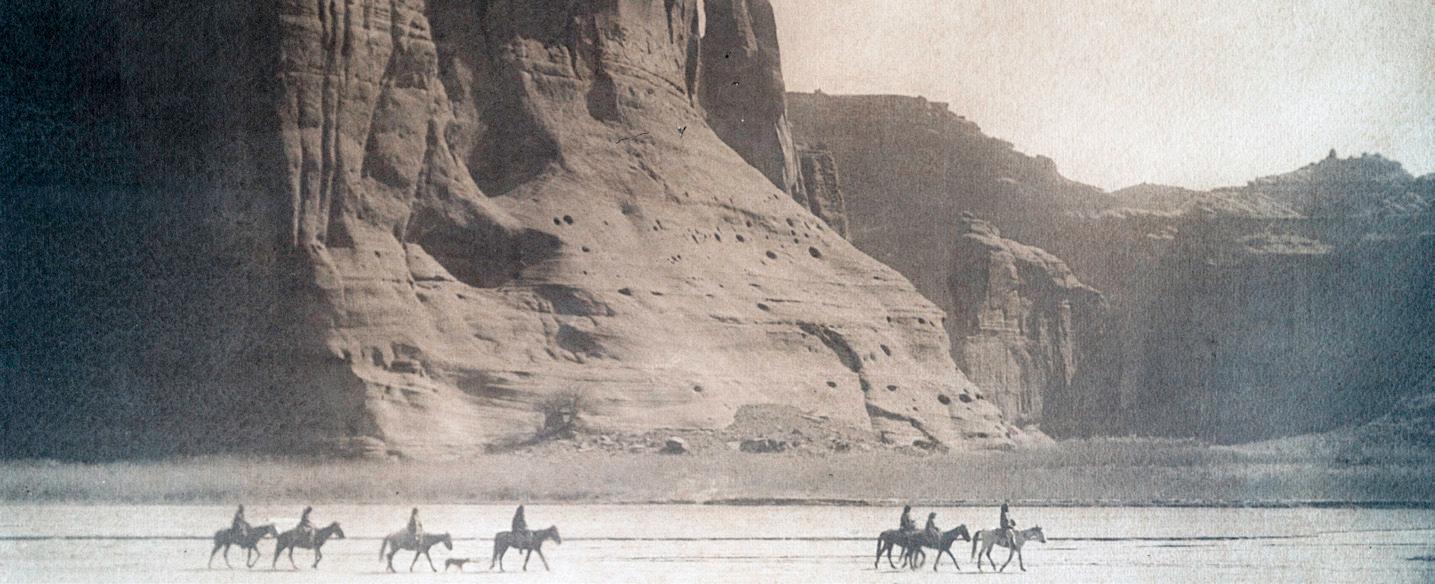
Sunday, November 9, 2025, 3 PM
Worthington United Methodist Church
Antoine T. Clark, conductor
Devin Copfer, violin
Jennifer Hambrick, poet and narrator
Worthington Historical Society
Nightwalk
A Worthington flânerie
Jennifer Hambrick, poet
Chokfi’ (Sarcasm) (2018)
Jerod Impichchaachaaha’ Tate
here is the picture of the wounded bird, Aaron Quinn i’m sorry for your future loss (2025) world premiere
Devin Copfer, violin
“Country Band” March, S.36 (1903; rev. 1914) Charles Ives (1874-1954)
Old Worthington Suite (2025) world premiere
Marshall H. Barnes (1921-2006) (Life in a Pioneer Village) Orchestration and new music by Jacob Reed
I. The Land
II. The Mill
III. St. John’s Churchyard
IV. The First Christmas
V. Social Life
VI. The Griswold Inn
Billy the Kid: Suite (1938)
Introduction: The Open Prairie
Street in a Frontier Town
Mexican Dance and Finale
Jennifer Hambrick, narrator
Aaron Copland (1900-1990)
A huge thank you to our Chair Sponsors who have made this season possible. If you want to sponsor a chair, please contact us at worthingtonchamberorchestra@gmail.com.
Prairie Night (Card Game at Night)
Gun Battle
Celebration (After Billy’s Capture)
Billy’s Death
The Open Prairie Again





Jerod Impichchaachaaha’ Tate
Tate’s captivating Chokfi’ for strings and percussion was commissioned by Oklahoma Youth Orchestras and premiered on May 6, 2018. The piece masterfully brings together two of the major artistic and personal influences in the composer’s life: his training as a Western classical pianist and composer, and his identity as a citizen of the Chickasaw Nation in Oklahoma. In Chokfi’, Tate drew equally on modern techniques from composers such as Stravinsky and Prokofiev as well as stomp dances, turtle-shell shakers, and other treasured features of Chickasaw musical heritage. Since Chokfi’ was intended for young musicians, Tate sought a topic that would be attractive to that age group and settled on the folklore character Chokfi’, an important trickster rabbit common within Southeast Native American cultures. In the composer’s words, “I decided to create a character sketch that would be both fun and challenging for the kids. Different string and percussion techniques and colors represent the complicated and diabolical personality of this rabbit person. For example, the opening and varied meter changes represent the unpredictable and sudden direction changes a rabbit makes during a chase.” Complex meter changes are only one of the unique performance techniques that younger players might be exposed to for the first time in Chokfi’. Irregular accent patterns, dynamic swells, and freely improvised sections are also used to impart the mischievous ways of the wily Rabbit, all devices that, as the composer explains, are “here to challenge us in many, and possibly unwanted, annoying ways.” Chokfi’ opens with striking rhythmic patterns over a traditional melody. Each section that follows is colorful and highly distinctive, with pizzicato figures, ostinato passages, rolling arpeggios, and percussive effects accompanying melodies that span a wide range of expressive moods.

Aaron Quinn
here is the picture of the wounded bird, i’m sorry for your future loss
The title of Aaron Quinn’s new work for solo violin and orchestra invokes the image of a bird as a metaphor for the future, representing individuality and freedom, yet carrying the weight of promises and possibilities that may not unfold as envisioned. The piece examines the challenging nature of these unfulfilled expectations while simultaneously expressing a strong optimism for the future, even when that future is different than originally anticipated. Quinn has used the relationship between the solo violin and orchestra to illustrate this progression, allowing the violin to shine at certain moments while isolating the soloist or even making the solo line inaudible at others. Differences in timbre also play an important role. The piece opens with long notes in the solo violin that are in direct contrast to the percussion’s short comebacks, resulting in an unstable, uncomfortable dialogue. When the strings replace the percussion, a sense of stability is established and increases gradually as the work moves forward. Though the solo violin is overtaken by the orchestra in the middle of the piece, the soloist ultimately achieves her long-soughtafter acceptance with balanced support from the ensemble. As Quinn explains, “This piece emerges from my recent explorations, an ongoing effort to understand what
it means to be an individual in spaces where I sometimes feel I don’t quite belong. Navigating the space between my Puerto Rican heritage and the persistent sense of otherness that comes with being mixed-race has made questions of identity a central focus in my recent work. I was deeply honored when one of my favorite musicians, violinist Devin Copfer, asked me to compose a new work for her and the Worthington Chamber Orchestra this season. Reflecting on Devin’s unique tone, our shared musical history, and her exceptional artistry, I sought to create a piece that would both highlight her individuality and seamlessly integrate her with the orchestra, all under the inspired guidance of Maestro Antoine T. Clark. In this composition, I explore tonality as a metaphor for individualism. The music moves between moments of beauty and dissonance, deliberately shaping forms and textures that contrast with one another, mirroring the complex tension between unity and individuality. Through sudden, dramatic shifts in timbre, I aim to evoke the Kafka-esque absurdities that quietly ripple beneath our daily experiences—those subtle, often overlooked forces that shape our lives, whether we recognize them or not. This piece is more than a showcase of the musician’s technical skill and emotional commitment; it’s an invitation to hear the world’s hidden layers—those fleeting, chance moments that influence our perception of reality, whether we are aware of them or not.”

Born October 20, 1874, Danbury: Died May 19, 1954, New York “Country Band” March, S.36
After thirteen years of writing and performing church music, Ives wanted to branch out and explore a broader range of musical colors and textures. Upon resigning his position as an organist at Central Presbyterian Church in New York in 1902, he immediately began producing works that incorporated popular and folk idioms, as well as embracing the latest avant-garde musical techniques. “Country Band” March was one such piece, written around 1903 in the style of a musical collage. During composition, Ives carefully selected fragments of tunes that would enhance the overall narrative through their thematic connections. These tunes were then layered into a dense cacophony of sound from which musical snippets would drift in and out of the texture. “Country Band” March contains quotations from approximately sixteen tunes, along with material that may be from yet-unidentified pieces or tunes of Ives’s own invention. The quotations range from popular ditties to patriotic melodies, British folk songs, pieces by Stephen Foster and John Philip Sousa, and excerpts from Ives’s Ragtime Dances. In combination, these quotations form a loving satire of amateur country bands and their lively but often flawed performances, complete with mistaken entrances, accidental solos, and musicians enthusiastically playing in the wrong key, in the wrong rhythm, or even in the wrong place on the page. The composer famously remarked, “Bandstuff! They didn’t always play right & together and it was as good either way.” Ives was the son of a local bandmaster and had plenty of experience with amateur groups, having assisted his father frequently at rehearsals and concerts. In this way, the comic “Country Band” March serves as an aural photograph of Ives’s youth and his fond memories of precious time spent with his father.

Marshall H. Barnes
Born 1921, Fairfield: Died July 2, 2006, Columbus
Orchestration with new music by Jacob Reed
Marshall Barnes earned a Ph.D. in composition from the University of Iowa and pursued additional studies at The Juilliard School in New York. He came to Worthington in 1957 to join the faculty of The Ohio State University as Professor of Composition and Music Theory, remaining there until his retirement in 1988. He produced works in a wide variety of musical genres that have been performed at venues nationwide, from local halls all the way to the prestigious Kennedy Center in Washington, D.C. Old Worthington Suite premiered on July 17, 1964, at the Sharon Township Memorial Building in Worthington, Ohio, during a summer chamber music series. It was inspired by a suggestion from the composer’s wife, who proposed that he write a piece honoring Worthington and its many historic charms. Intrigued by the idea, Barnes consulted a master’s thesis by school principal Gladys Linnabary, which delved into Worthington’s rich past. There, he found a wealth of evocative stories that gave rise to a musical portrait of the city’s early pioneer days. Since its premiere, Old Worthington Suite has only been performed a handful of times. According to Kate LaLonde, Executive Director of the Worthington Historical Society, “Old Worthington Suite was performed in a variety of venues, from a faculty concert at OSU to the Orange Johnson House. In 1982, Barnes put the work into a more permanent form by having it published and made available at the Worthington Historical Society and Stanton’s Music in Columbus. In 2002, the suite was performed during the Founders Day Service of Thanksgiving at the Worthington United Methodist Church, the opening event of Worthington’s Bicentennial celebration in 2002-2003.”
Originally scored for a chamber quartet of flute, clarinet, piano, and narrator/singer, Old Worthington Suite has been reimagined by Jacob Reed through orchestration and the addition of new music. In describing his creative process, Reed explained, “When orchestrating someone else’s work, there is always a balance to be struck between adhering to the original notes and harmonies exactly, imagining what the composer might have written for orchestra, and finding what best articulates the original ideas and intentions. Ideally, the latter two overlap to a great extent. In this case, I found great joy in exploring Barnes’s ideas and finding ways to enliven them with the orchestra.” In the process of revising the work, Barnes’s narration has also been updated. Kate LaLonde clarified these changes, saying, “In keeping with the spirit of each movement, the Worthington Historical Society provided revised narration informed by the decades of historical research in Worthington that has been collected since Linnabary’s text was authored. Popular lore, such as the original inclusion of a tale of Johnny Appleseed sleeping on the hearth of the Griswold Inn, deemed more than likely a fiction, has been removed. More detailed descriptions, such as that of the landscape in 1803, were sourced from primary documents, including letters authored by James Kilbourn and the diary of Joel Buttles.”
The six movements of Old Worthington Suite sparkle with limitless variety. American themes, mournful laments, joyous festivities, wild folk fiddlers, and heartfelt ballads mix with quotations from folk tunes such as Old Hundred, When the Role Is Called Up Yonder, and Chicken Reel, all held together musically by a four-note figure that
Barnes transforms in ingenious ways. The first movement, titled ‘The Land,’ portrays Worthington’s founding in the vast open plains. As Barnes himself said, “What I was trying to do here was to give some idea of the emptiness of the land. Not that there weren’t plenty of trees, but there weren’t a lot of people and so the music that I’ve written to portray this suggests the space, I hope.” Reed’s orchestration pays homage to the original quartet with the flute and clarinet sounding Barnes’s pioneer theme just as they did in the 1964 premiere. ‘The Mill’ refers to the first mill in the town and its integral importance to the growing community. Musical versions of swirling currents and water droplets recall the movement of the millwheel. The third movement visits ‘St. John’s Churchyard,’ where many early pioneers were buried. In their memory, a hymn-like dirge is punctuated by the sound of church bells. The lilting 6/8 meter of ‘The First Christmas” makes for a good-natured atmosphere of feasting and merrymaking. In ‘Social Life,’ interconnected rhythmic passages and a jaunty melody sustain this vibrant impression of daily life in a small town. The final movement, ‘The Griswold Inn,’ reprises the expansive opening material from the first movement. Now more richly harmonized, the movement reflects on the inn’s longstanding role in the community and its contribution to decades of Worthington’s history.
Old Worthington Suite (Life in a Pioneer Village)
Text by Gladys Linnabary and the Worthington Historical Society
In 1803, Colonel Kilbourn and the Scioto Company found land for a town in a dense forest of oak, ash, walnut, beech, and sugar trees. Kilbourn described excellent farmland for the forty families who were ready to journey west.
A log building was constructed for use as the church and school, as well as for the balls and meetings of the townspeople. The following spring, Kilbourn surveyed and laid out the village.
Settlers found that turkeys, deer, and small game were plentiful in the new Ohio settlement.
Native Americans from the Wyandot and Mingoe tribes brought muskrat and raccoon furs to the village to trade for goods with the settlers.
Endless work filled the settlers’ days. Every person of every age worked for success in the new town called Worthington.
The pioneers were anxious to have a grist mill to grind wheat flour, and James Kilbourn’s mill, constructed in 1805,
served the local farming community. Farmers worked long hours during planting and harvest seasons, and sawmill operators did the same when rainfall raised the river, providing abundant waterpower.
The burying ground behind St. John’s Church is known for its history, its beauty, and its peace. Gravestones tell of the first settlers of Worthington, among them five Revolutionary War soldiers and seven veterans of the War of 1812. Families rest together in this serene place. The plot of town founder James Kilbourn holds a prominent place by an old tree in the center of the churchyard. The burial ground was established for the new town in 1804 when the first to be laid to rest here, Abner Pinney, died shortly after arriving from Connecticut.
Headstones, some ornate, some weathered, are reminders of the pioneers who established Worthington and are also a testimony to the hardships of life on the frontier.
The first school in Worthington was a
log building erected in 1803, built of the first timber cut by the settlers. The first Christmas was celebrated in the schoolhouse with much feasting and toasting.
Social life in the early days at Worthington was varied and plentiful. Young people attended the singing school, which was held twice a week.
Older women gathered in the afternoons for their quilting parties and sewing circles, which were held at different homes in the village.
Men often held their lodge meetings in the evenings when their day’s work was done.

Almost weekly, a dance was held in the large log school, which was attended by nearly everyone in the community.
In 1811, Ezra Griswold built the Griswold Tavern, an establishment that was central to Worthington community life. Between the daily tavern business, hosting balls and dinner parties, and conducting government affairs, the building was a bustling place.
For 150 years, five generations of the Griswolds lived in the inn.
A spinning wheel brought to Ohio in 1803 by Ruth Griswold stood by the fireplace. Many yarns were spun by the fire, retelling the early history of the people of Worthington.
Born November 14, 1900, Brooklyn: Died December 2, 1990, North Tarrytown
Copland’s works from the 1930s and 1940s were shaped by his desire to communicate with a wider audience, driving a compositional shift towards simplicity, tunefulness, and brilliant orchestration. The one-act ballet Billy the Kid is a beloved representative of the composer’s more accessible style and presents a semifictional treatment of the life of the legendary Wild West outlaw. Copland described the piece as “an evocation of the storybook West” and was not concerned about being true to history so much as selecting moments from Billy’s story that would allow the composer to convey the aesthetic of the Old West musically. To enhance the American flavor of the piece, Copland quoted American folk tunes and authentic cowboy songs. The commission for Billy the Kid came from Lincoln Kirstein, the charismatic young leader of the newly formed Ballet Caravan Company, which gave the first performance at Chicago’s Civic Opera House on October 16, 1938, in a version for two pianos. Copland wrote the orchestral suite a year later. The piece opens with one of Copland’s signature sounds, widely spaced harmonies that evoke the expansiveness of the open prairie. The view shifts to a busy street in a frontier town where cowboy songs and Mexican dances mingle in a raucous display before dissolving into a quiet nocturne for Billy’s card game under the stars. The sheriff’s posse opens fire as the percussion imitates gunshots. Billy is captured and a drunken crowd celebrates his arrest at the local saloon. Billy’s death is reflective, with repeated notes in the violin and harp that depict his fading heartbeat. As the sun rises over the prairie the next morning, the opening music returns with a renewed sense of courage.
- Program notes by Heike Hoffer

Devin Copfer is a performer, recording musician, producer, contractor, arranger, registered Suzuki teacher, and arts entrepreneur based in Columbus, OH.
Copfer is the co-founder and director of Chamber Brews, a dynamic new music ensemble known for multi-genre collaborations with outstanding artists, designing unique and interactive programming, and celebrating new music. She currently sits on the advisory board of the Johnstone Fund for New Music and serves as concertmaster of the Worthington Chamber Orchestra.
Passionate about new music, over the last decade Copfer has commissioned and premiered more than 10 works for solo violin, string duo, trio, and quartet, and was invited to perform on the 2024 and 2025 Capital NOW Music Festival stage, working with Alla Zagaykevych and Reena Esmail. She is an ardent collaborator across multiple genres, having worked with artists such as Maria Schneider, Helen Sung, Cory Wong, the Trans-Siberian Orchestra, Michael Bublé, and Disturbed.
A graduate of The Ohio State University (Bachelor of Music in Violin Performance; Bachelor of Arts in Arts Management), Devin’s musical curiosity led her to build strong relationships outside of the university as well—playing with, recording, and writing arrangements for bands (Small Songs, Oliver Oak, Fables, Lowlights, Waves de Aché), growing contacts as a producer, and managing musicians as a contractor. She attributes her career growth and trajectory to the thriving community of artists, colleagues, and mentors she gets to work with in Columbus, OH.

Aaron Quinn is a performer and composer based in Brooklyn, New York. He has appeared in concert internationally and collaborated with a wide range of ensembles, including Realicide, Sunchoke, Liver Quiver, and Team Players. He has also performed newly composed works with artists such as Wadada Leo Smith, Andrew Cyrille, and Miho Hazama.
His music has been heard at The Kennedy Center, The Smithsonian Institution, and The Manhattan School of Music, with recordings released on labels including Lurker Bias, Triptick Tapes, Mole Tree Records, and Illuso Records.
Primarily self-taught as a composer, Quinn has also studied privately with Michaël Attias, Tim Berne, and Aurora Nealand. In 2025, he was selected to participate in the European/American Alliance in Paris, working with Juilliard professor Philip Lasser (a former pupil of Nadia Boulanger), Dr. Benjamin C.S. Boyle, and Abbie Betinis.
As an educator, Quinn has served as an artist-in-residence at institutions such as Capital University in Columbus, Ohio (NOW Festival), and Georgetown Day School in Washington, D.C. (Jazz Festival). He also teaches privately at the Kaufman Music Center in New York City.
Recent projects include new work for his quartet Sunchoke (with David Leon, Walter Stinson, and Matt Honor), combining the harmonic and rhythmic vocabulary of early2000s grindcore/hxc/skramz with Afrological improvisational frameworks, and a new ASMR-influenced lowercase duo with frequent collaborator Ishmael Ali, integrating SP-404s, Pure Data, and acoustic instruments.
Upcoming commissions include a long-form chamber work for improvisers that incorporates modular musical and physical gestures, a new composition for Pierrot ensemble, and a string quartet to be premiered in Paris in the summer of 2025.

A poet hailed for her “brilliant imagery,” “masterful craftsmanship,” and “uniquely musical voice,” Jennifer Hambrick is a seven-time Pushcart Prize nominee and the author of the poetry collections a silence or two, winner of a 2025 Merit Book Award from the Haiku Society of America; In the High Weeds, winner of the Stevens Manuscript Prize from the National Federation of State Poetry Societies; Joyride, winner of the Marianne Bluger Book Award; and Unscathed.
Hambrick has been featured by U.S. Poet Laureate Ted Kooser in American Life in Poetry, as guest poet with Rattle editor Tim Green on Rattlecast, on Inside the Writer’s Head, and elsewhere, and hundreds of her poems are published in The Columbia Review, Rattle, The American Journal of Poetry, Maryland Literary Review, Santa Clara Review, The Main Street Rag, Modern Haiku, and in dozens of other literary journals and invited anthologies published in the U.S. and around the world.
A frequent recipient of poetry commissions, many for interdisciplinary collaborations, Hambrick has penned original works as poet laureate of the 75th-anniversary season of Chamber Music Columbus and for the VIVO Music Festival, the Sunday at Central concert series, the McConnell Arts Center Chamber Orchestra, as a collaborator in the Johnstone Fund for New Music’s project The Big SCORE, and in many other featured roles. Hambrick was appointed the inaugural artist-in-residence at Granville’s historic Bryn Du Mansion and has been presented in readings and performances of her work throughout Ohio and beyond.
As an Ohio Arts Council Teaching Artist, Hambrick encourages learners throughout the state to tell their stories in poetry. A storyteller equally at home on the page and on the air, Hambrick enriches the central Ohio with stories about classical music and other cultural happenings as midday host, multimedia producer, and host and producer of The American Sound for WOSU Classical 101. jenniferhambrick.com.
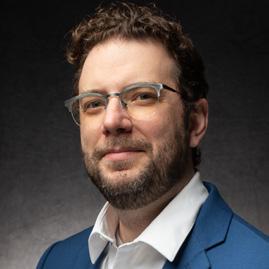
Jacob Reed is a composer, jazz drummer, and music educator. He has been commissioned by the Central Ohio Symphony, the Worthington Chamber Orchestra, the OSU Department of Dance, Trinity Episcopal Church on Capitol Square, the Columbus Bicentennial Public Art Commission Finding Time, the Ohio Music Teachers Association, Hixon Dance, and numerous choreographers and performers. He has received grants and awards to support his artistry from the National Endowment for the Arts, the PNC Arts Alive Grant, the Ohio Arts Council, the Greater Columbus Arts Council, the Johnstone Fund for New Music, the Columbus Foundation, and the Ohio State University Global Arts and Humanities Fund. He draws on a diverse musical background to write engaging and thrilling music for orchestras, choirs, chamber groups, and jazz ensembles. Reed is intrigued by the intersection of music with other arts and collaborates frequently with choreographers, writers, and visual artists. He has studied composition with Augusta Read Thomas, Tom Wells, Gregory Proctor, and
Igor Karaca, percussion with Susan Powell, and jazz drums with Joe Ong and Frank Worrell.
Reed’s connection to the Worthington community goes back to 2002, when he began a long tenure of performing with his jazz trio at the Worthington Inn. He was married to his wife, choreographer Sarah Hixon, at St. John’s Church in 2008. In 2009, his jazz trio supported the opening of the McConnell Arts Center. Since 2010, he has worked as an educator in the Worthington Schools, teaching choir, music theory, and general music at the elementary, middle, and high school levels. As a composer, he has enjoyed a warm partnership with the Worthington Chamber Orchestra.
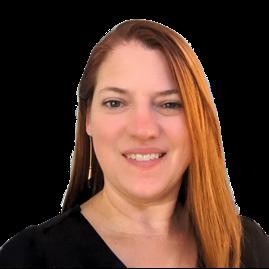
Kate LaLonde is in her thirteenth year as Executive Director of the Worthington Historical Society, where she has served in various roles for the past 19 years. She works closely with Society volunteers to preserve its three historic properties, present engaging exhibits and events, conduct research on Worthington’s past, and share the stories of the community.
In addition to her work in Worthington, LaLonde serves as Treasurer and Outreach CoChair for the Ohio Local History Alliance, an organization representing more than 300 member institutions—from small neighborhood historical societies to large museums— dedicated to advancing the field of local history in Ohio through education, advocacy, and collaboration.

Heike Hoffer completed a Master’s degree in Oboe Performance at the University of Minnesota in 2002 and then accepted a fulltime position in the Music Department at the University of Texas Rio Grande Valley, where she taught music history and oboe for five years. She resumed her graduate studies in 2009, receiving a Master ’s degree in Musicology from the University of Arizona and then entered The Ohio State University to pursue a Ph.D. in Musicology. After moving to Japan in 2015 to conduct dissertation research, she completed her Ph.D. at OSU in 2022 with a thesis on the use of Beethoven’s “Ode to Joy” melody as part of anime’s musical score and possible interpretations of this music by Japanese viewers. Her research interests focus primarily on the relationship between Western classical music and anime in terms of the cultural landscape of modern Japan, and she has published articles on the subject in both major international presses and prominent academic journals. Today, Heike lives in Tokyo with her husband, where they watch all of the latest anime and work together on various academic projects.
CONDUCTOR’S CIRCLE
($20,000 and up)
Greater Columbus Arts Council
Ohio Arts Council
PNC Arts Alive
IMPRESSARIO
($10,000-$19,999)
Benedicta Enrile
Johnstone Fund for New Music
MAESTRO
($5,000-$9,999)
The Columbus Foundation
SYMPHONY
($2,500-$4,999)
Music Academy of Worthington
Antoine T. Clark and Caleb Hutslar
Julie Dawson
Nancy Elkington and Ted Dziemianowicz
Darnell and Carmen Perkins
Bill and Joyce Roberts
Frank and Connie Shepherd
CONCERTO
($1,000-$2,499)
Beacon Hill Investment
Advisory
Mick and Beth Ann Ball
James C. Bieber
Dan and Ginny Bryan
Carolyn Carter
City of Worthington
Ben Cooper and Carly Edelstein
Michelle Geissbuhler
Jennifer Hambrick
Bronwynn Hopton
Lori and Don Overmyer
Park National Bank
David and Lorraine Robinson
Linda Royalty
Kevin and Patty Showe
Ellen Stukenberg
Charlie and Betsy Warner
Women’s Philharmonic Advocacy
Worthington Libraries
SUITE
($500-$999)
Ann Olszewski
Cleverly and Associates
OVERTURE
($250-$499)
Nadine Block
Phil and Carol Geissler
Albert and Barbara Glover
Joyce Fisher
Genny Smartwood
The Loft Violin Shop
PRELUDE
($50-$249)
Melanie Bales and Gilberto
Albuquerque
Sara and Tom Bihari
Janice Boyd
Jodi Bopp
John and Bernice Cooper
Sean Cooper and Jeremy Graham
Denig Jewelers
Donna Earhart
Matthew Gregory
Kathleen Griffin
Margaret Hermann
Rebecca Hermann
Brian Horne
Karen Jiobu
Jane Karras
Joan Matyskella
Jane Marland
Paul Niswander
Michael Parsons
Scott Smallwood
Jim and Lynette Vaive
Tynan Wait
*Donors listed contributed between July 1, 2025, and October 5, 2025.







